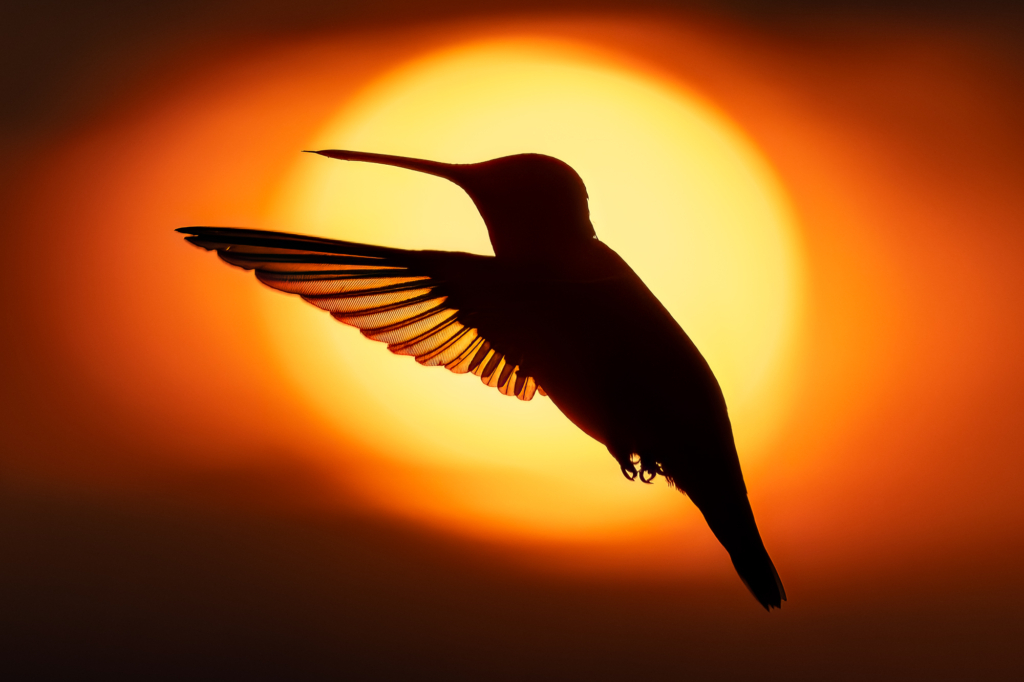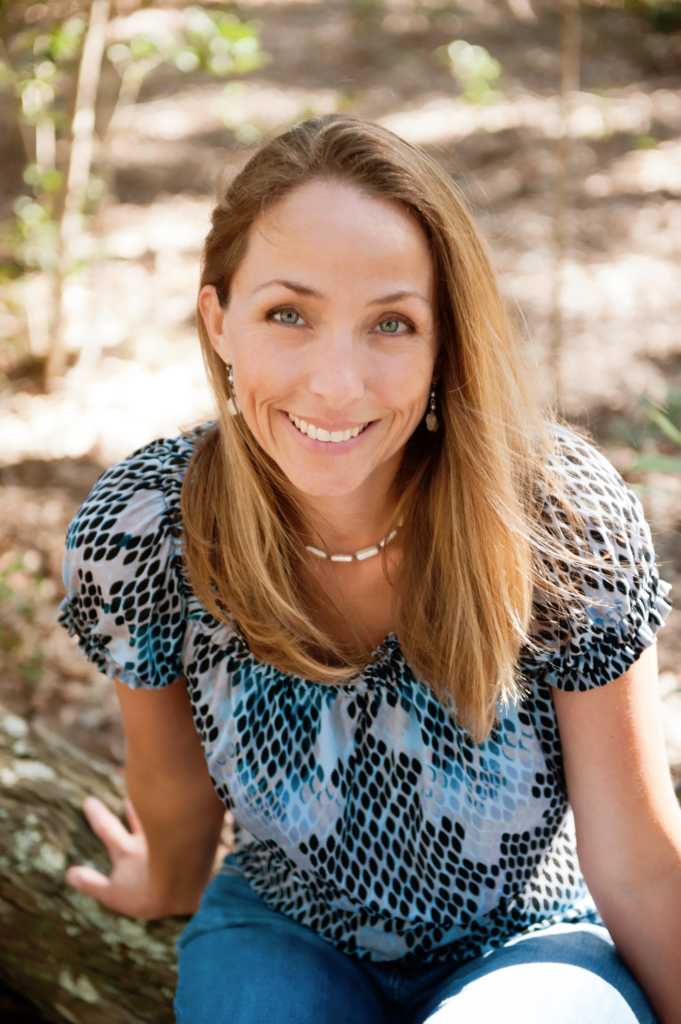Our family owns a rustic log cabin tucked deep within the Blue Ridge Mountains, where summer evenings come alive with the whir of ruby-throated hummingbirds. Each July, we hang feeders on the porch and watch the yard burst with color—rhododendrons, azaleas, Turk’s cap lilies, and mountain laurels—all drawing these tiny, iridescent visitors.
Every evening, I settle into a quiet corner of the deck, camera and zoom lens ready, watching the sun melt behind the ridgeline. For years I’ve chased one elusive vision: a hummingbird perfectly silhouetted against the glowing ball of the setting sun, like a fleeting eclipse. It became my self-imposed challenge—a shot I could picture in my mind but had never managed to capture.
On this particular night, I heard her wings before I saw her. She zipped into view, a blur of motion and curiosity, hovering inches from my face before darting off. I tracked her through my lens, adjusting settings and chasing light as she flitted between flowers and feeders. But every frame fell short—too high, too far, too fast.
Time was slipping away with the fading light. Arms aching, I finally stopped the frantic panning and took a deep breath. I chose my spot, aligned the setting sun, dialed in a 1/4000-second shutter speed, and waited.
Then—magic.
The hum returned. She hovered just long enough, perfectly placed before the glowing orb. Her wings caught the golden light, suspended midair, and I pressed the shutter. Goosebumps. I knew instantly: this was the shot. The years of patience, the quiet evenings, the trial and error—all distilled into a single frame.
I didn’t just take a photograph; I conquered my challenge and captured a moment I had dreamed of for so long—my own “Ruby Eclipse.”


